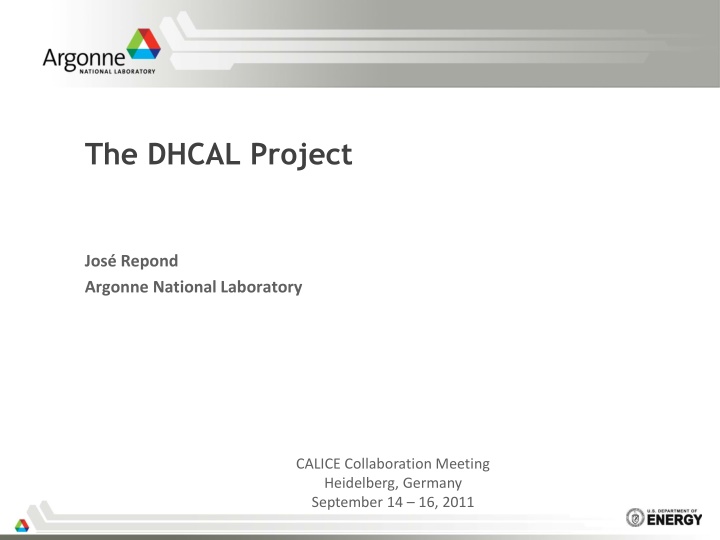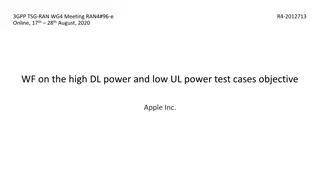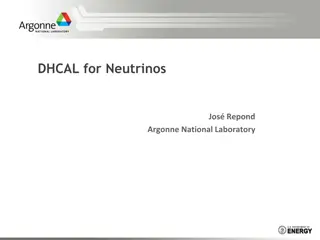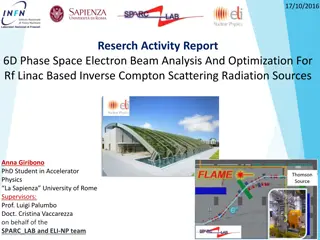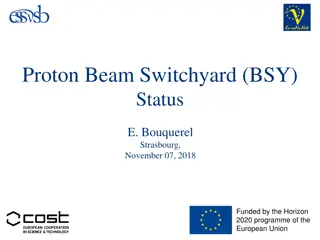Updates on the DHCAL Project and Test Beam Campaigns
The DHCAL Project, led by Jos Repond and the Argonne National Laboratory in collaboration with CALICE, made significant progress with the completion of 38 layers and 350,208 readout channels. Test beam campaigns were conducted with notable events and configurations. The upcoming test beam will involve removing RPCs and using minimal absorbers for the MINERVA experiment. Tertiary beams for MINERVA and the DHCAL were also discussed, along with developments involving tungsten and easy transportation and assembly processes.
Download Presentation

Please find below an Image/Link to download the presentation.
The content on the website is provided AS IS for your information and personal use only. It may not be sold, licensed, or shared on other websites without obtaining consent from the author.If you encounter any issues during the download, it is possible that the publisher has removed the file from their server.
You are allowed to download the files provided on this website for personal or commercial use, subject to the condition that they are used lawfully. All files are the property of their respective owners.
The content on the website is provided AS IS for your information and personal use only. It may not be sold, licensed, or shared on other websites without obtaining consent from the author.
E N D
Presentation Transcript
The DHCAL Project Jos Repond Argonne National Laboratory CALICE Collaboration Meeting Heidelberg, Germany September 14 16, 2011
The DHCAL 38 layers with 350,208 readout channels Completed in October 2010 479,323 channels in total The TCMT 14 layers with 129,024 readout channels Completed in April 2011 World record in calorimetry 2
Test beam Campaigns # of muon events 1,404,700 # of secondary beam events 1,523,792 Dates # of DHCAL layers # of TCMT layers ECAL October 16 21, 2010 38 0 NO January 7 February 6, 2011 38 0-13 NO 1,583,688 3,619,006 April 8 May 6, 2011 38 14 YES 2,483,570 4,827,786 May 26 June 28, 2011 38 14 NO 3,286,757 2,690,294 Total 8,758,715 12,660,878 Approximately 20M events total (Minus calibration events) (Minus spurious triggers) Many thanks to all who helped man the shifts 3
Test beam Configurations Beam momentum [GeV/c] Rotation angle of DHCAL 00 +2,4,6,8,10,12,16,20,25,32,40,50,60 100 +8,16,32 00 +120 protons 4
Next test beam Dates November 2 December 6, 2011 Configuration Remove RPCs from CALICE stack Insert into assembly stack Minimal absorber = cassette covers 2 mm Cu + 2 mm Fe = 0.25 X0/layer = 0.025 I/layer Tertiary beam at FTBF Developed for the MINERVA experiment Easily reinstalled 5
Tertiary beam for MINERVA Wire chambers Target Dipole magnets Collimator Momenta between 0.3 and 2.0 GeV/c Mixture of particles Identified with TOF MINERVA used large chambers (not practical for us) Plots etc. courtesy Doug Jensen 6
Tertiary beam for the DHCAL All particles in 10 spills Wire chambers MeV/c Only pions in 10 spills Smaller aperture chambers Simulation for low momentum set-up Simulation of high momentum setup ongoing MeV/c 7
DHCAL with Tungsten Wolfgang Klempt and Erik van der Kraaij visited us at Argonne 2 days of in depth discussion CERN+ CERN- FNAL+ FNAL- Tungsten Easy Transportation Cassettes Transport fixture Easy Electronic racks Transport Easy 120-220 V Needs to be investigated (done) Easy Gas safety Needs to be investigated (OK) Easy Shift crew = = Air conditioning = = Assembly of structure Easy Needed Assembly of detector = = Cerenkov Timings need to be investigated Easy Rates = = Duty cycle 9s/45 s 3.5s/min Energies 1-300 GeV 2-120 GeV Availability year 2012 2013 2013 2012 Availability/year PS available 24 hour/day operation SPS 3-4 weeks Easy 14 hour/day operation 8
Cost estimate for CERN test beam Item Cost in $ Comment Design transport structure for detector layers 1,000 2 man week Built transport structure for detector layers 3,000 Transport (racks, cables, detector) to CERN 5,000+1,500 (packaging) 1 container Transport (racks, cables, detector) to ANL 5,000 Four people for installation and assembly for 2 weeks 4*(1,200+14*120) = 12,000 Assembly in the PS area Four people for shifts for 2 weeks (tests at the PS) 14*120= 1,700 Shifts around the clock Four people for shifts for 4 weeks (tests at the SPS) 4*(1,200+30*120) = 20,000 Shifts around the clock Gas supply 1,000 Total 50,200 + 15,000 = 65,000 Contingency assumed 30% 9
